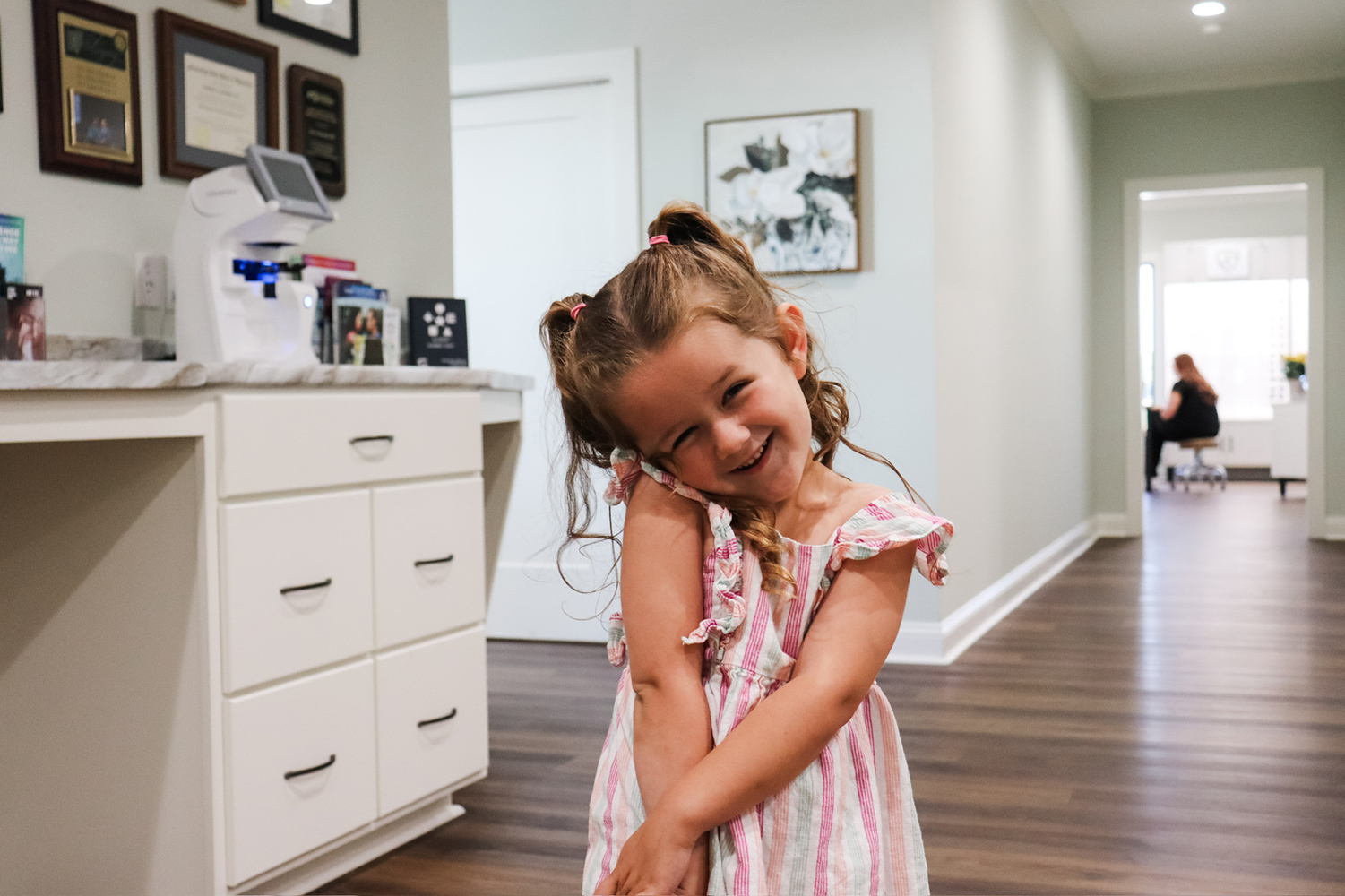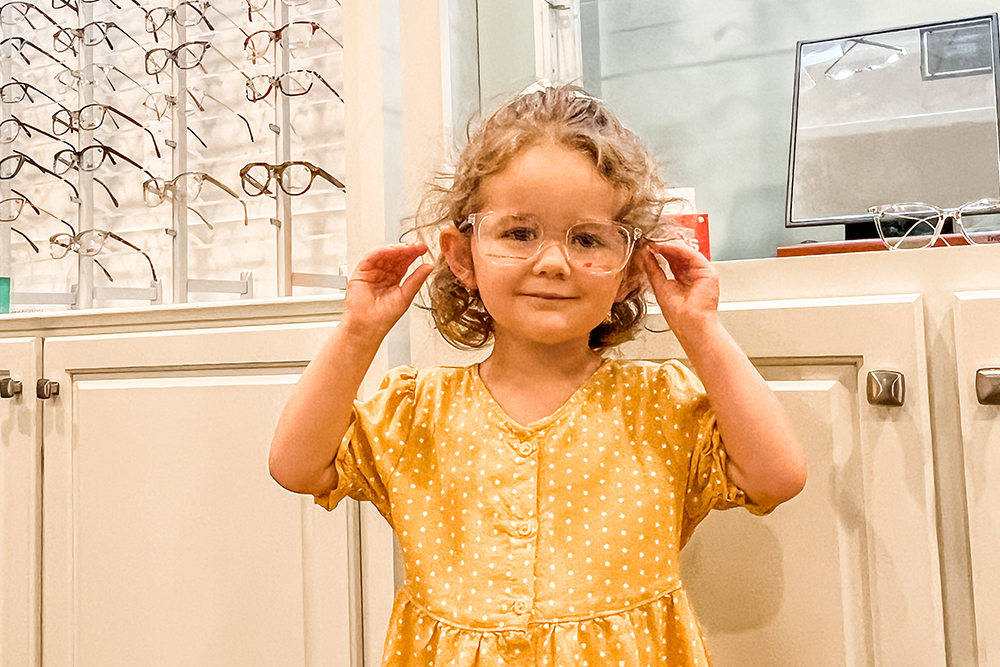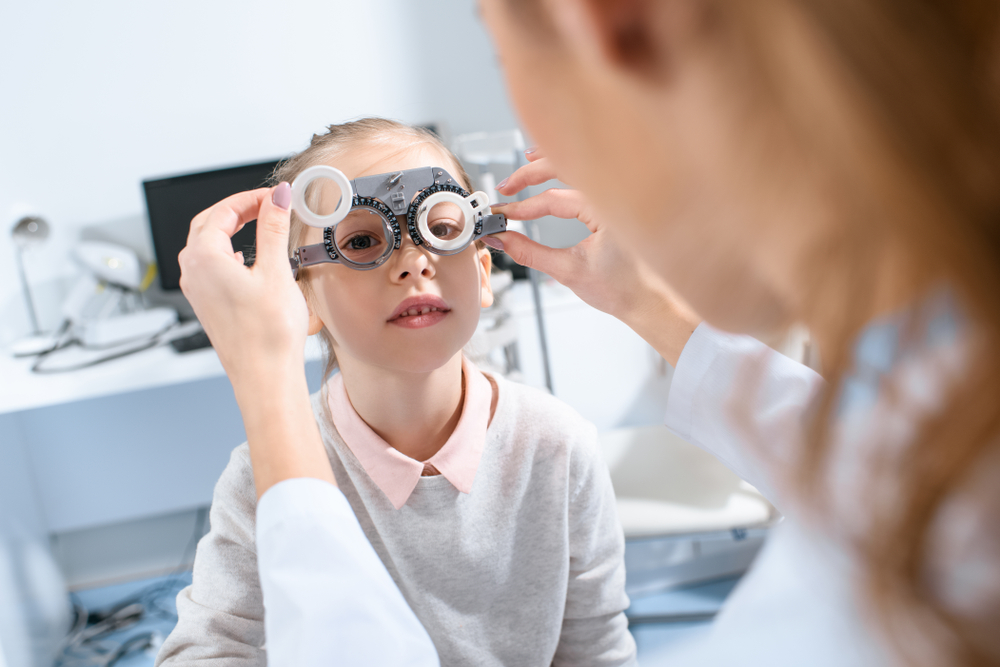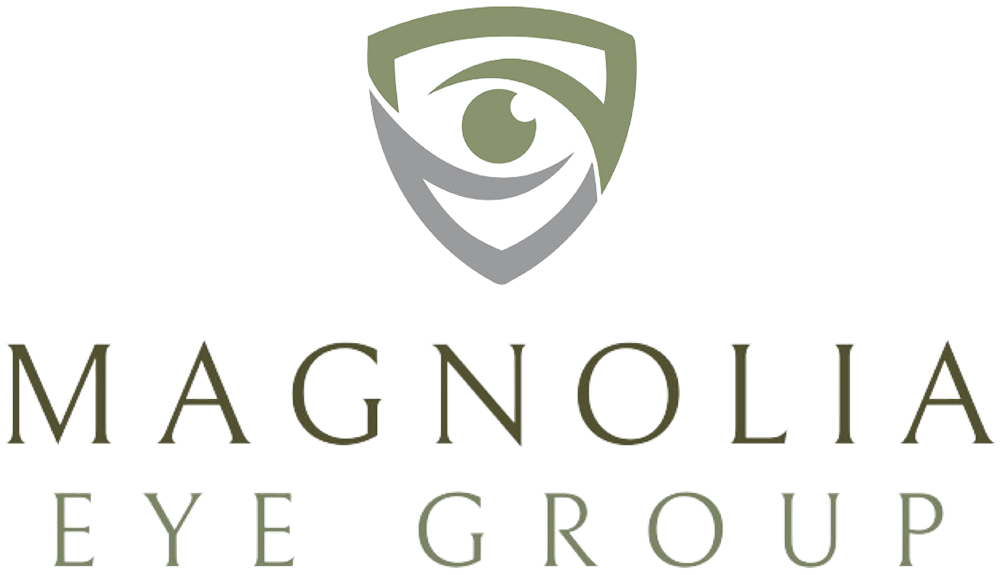Children’s Eye Exams
Ensuring your child’s eye health from an early age is crucial for their overall development and academic success. Regular children’s eye exams can detect and address vision issues that might otherwise hinder learning and social interactions.
At Magnolia Eye Group, we specialize in creating comfortable, age-appropriate eye exam experiences that help set the foundation for lifelong healthy vision. Our team understands that examining young eyes requires special techniques and patience to get accurate results while keeping children engaged and at ease.

Understanding Children’s Eye Exams
Children’s eye exams differ significantly from adult examinations. These specialized assessments are designed to evaluate visual acuity, eye alignment, eye movement, depth perception, and color vision in ways that are appropriate for a child’s age and developmental stage.
Unlike standard vision screenings offered at schools, a comprehensive children’s eye exam conducted by an optometrist can detect subtle issues that might otherwise go unnoticed. Early detection through professional children’s eye exams can prevent learning difficulties and allow for more effective treatment of various eye conditions.

Benefits of Children’s Eye Exams
Children’s Vision Issues & Stages of Sight
Several vision conditions can develop in childhood and can impact eyesight. Our experienced eye doctors can diagnose and recommend treatment for a variety of vision issues, including the following.
Myopia (Nearsightedness)
Myopia (nearsightedness) begins in childhood and can continue to develop until vision stabilizes in adulthood. High myopia increases the risks of more serious conditions later on, and children with undiagnosed myopia can struggle in school.
Most children with myopia received a diagnosis before the age of 12, making children’s eye exams a key component of addressing the condition early on. While it cannot be cured, myopia can be controlled if detected early.
Strabismus (Crossed Eyes)
A muscle condition known as strabismus is usually the culprit when the eyes are crossed. It generally means the eyes are not working together properly. Sometimes, the condition is obvious as one eye turns in a different direction.
Strabismus does not get better on its own and requires intervention from an eye doctor to rectify.
Amblyopia (Lazy Eye)
Amblyopia, also known as a lazy eye, occurs when there is a large difference in prescription between each eye. Over time, the connection between the brain and affected eye decreases, as one eye consistently provides poor images.
Treatment, such as patching the good eye and forcing the brain to connect with the weaker one, can almost always resolve this condition.
Convergence Insufficiency
When blurry or double vision is present, convergence insufficiency may be the reason. Convergence insufficiency occurs when the eyes don’t work together while looking at nearby objects or up-close work.
An eye exam is imperative to detect convergence insufficiency, as it occasionally presents without visual cues.
Our Children’s Eye Exam Process
Comprehensive Vision Assessment
We begin with a thorough evaluation of your child’s visual acuity, eye alignment, and tracking ability using kid-friendly testing methods. Our optometrists carefully observe how your child’s eyes work together and respond to different visual stimuli. This detailed assessment helps us identify even subtle vision issues that might affect learning or development.
Personalized Care Recommendations
Based on exam findings, we create specific recommendations tailored to your child’s unique visual needs and lifestyle. We consider factors like classroom seating, screen time habits, and participation in sports when developing solutions. Our team explains all options in straightforward language so you understand exactly how to support your child’s vision health.
Comfortable, Kid-Friendly Experience
We’ve designed our exam process specifically for children, using age-appropriate techniques that feel more like games than tests. Our office features child-sized equipment and engaging visual materials that keep young patients interested and cooperative. We take time to build trust with each child, ensuring a positive experience that encourages lifelong eye care habits.
Clear Communication and Education
We explain each finding in simple terms, helping both you and your child understand any vision challenges identified. Our optometrists use visual aids and practical examples to demonstrate how certain conditions might affect daily activities. This educational approach empowers families to make informed decisions about their child’s eye health.
Ongoing Vision Support
We provide continued care through scheduled follow-ups to monitor your child’s vision development and treatment effectiveness. Our team remains available between appointments to address any concerns or questions about your child’s vision. This consistent support ensures optimal outcomes as your child grows and their visual demands evolve.

Stages of Sight
There are many milestones in a baby’s visual progression. Here’s what to expect at some important stages:
- Birth to 4 Months: Your baby’s vision improves rapidly at this stage. They should be focusing on nearby objects and faces and begin reaching for things.
- 5 to 8 Months: A 3-dimensional view of the world begins to form, as does color vision.
- 9 to 12 Months: Babies begin to grasp objects and can judge distances.
- 1 to 2 Years: Hand-eye coordination and depth perception should be well-developed.
Read More
As babies grow and develop, you can help encourage their healthy visual development by playing games like peek-a-boo and patty-cake, providing objects that can be explored with the hands, and playing games that include dropping things and picking them up.
To ensure your child develops visual skills at the appropriate pace, be sure to bring them in for comprehensive eye exams.

Why Choose Us for Children’s Eye Exams
Magnolia Eye Group stands apart with our purpose-built pediatric exam rooms featuring child-sized equipment and engaging visual tools that turn eye tests into positive experiences. Our optometrists receive specialized training in pediatric care techniques that adapt to each child’s developmental stage, from curious toddlers to active school-aged children.
We prioritize building trust first—explaining procedures at eye level, using simple language, and celebrating small victories that make children feel accomplished rather than examined. Parents regularly tell us their children ask when they can return, which we consider the ultimate endorsement of our approach to pediatric eye care.
Give Your Child the Gift of Clear Vision
Clear vision lays the foundation for your child’s learning, development, and confidence—don’t wait until school screenings flag potential issues that could have been addressed earlier. Contact Magnolia Eye Group at 662-562-5500 or message us on Instagram to schedule your child’s comprehensive eye exam with our pediatric vision specialists. Your child deserves the advantage of optimal vision health that comes from professional, specialized care designed specifically for their unique needs.
FAQs
When should a child have their first eye exam?
The American Optometric Association recommends that children have their first comprehensive eye exam at 6 months of age. This initial assessment establishes a baseline for your child’s visual development and can detect early signs of eye conditions that might affect development.
How often should a child get an eye exam?
After the initial exam at 6 months, children should have follow-up comprehensive eye exams at age 3 and again before starting first grade (typically age 5-6). Following these early assessments, school-aged children should have annual children’s eye exams through their school years, with more frequent visits recommended for those with existing vision issues or risk factors.
Can my child get an eye exam under medical insurance?
Many medical insurance plans cover children’s eye exams, especially when there’s a medical concern or diagnosed condition requiring monitoring. Vision insurance typically covers routine exams, while medical insurance often covers exams related to eye health conditions, injuries, or diseases.
What does a child eye exam report look like?
A children’s eye exam report includes measurements of visual acuity, eye alignment, depth perception, color vision testing results, and an assessment of overall eye health. The report indicates whether vision falls within normal ranges for their age and includes prescription details if needed, along with specific treatment recommendations.
How much is a child eye exam?
The cost of a children’s eye exam typically ranges from $50 to $150, though prices vary based on location, exam comprehensiveness, and whether specialized testing is required. Many vision insurance plans cover one child’s eye exam annually with minimal out-of-pocket costs, and at Magnolia Eye Group, we offer various payment options to ensure cost isn’t a barrier to essential eye care.
